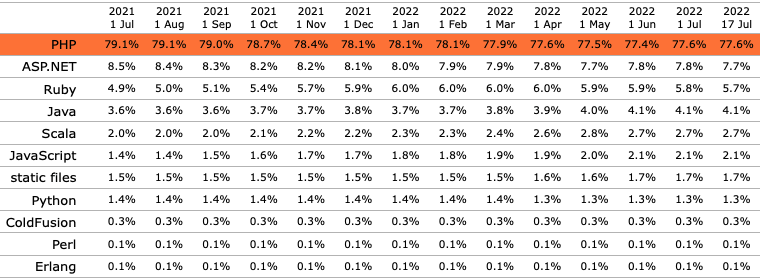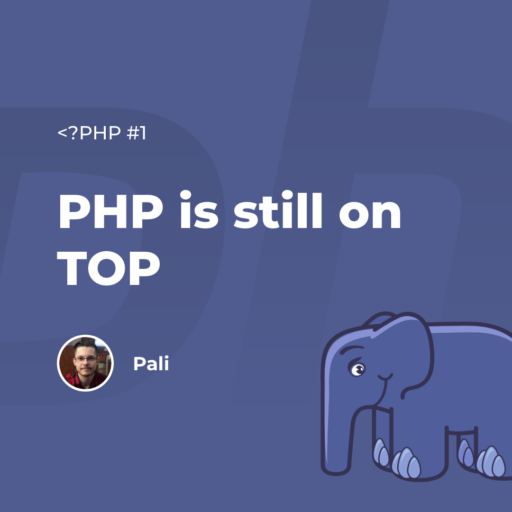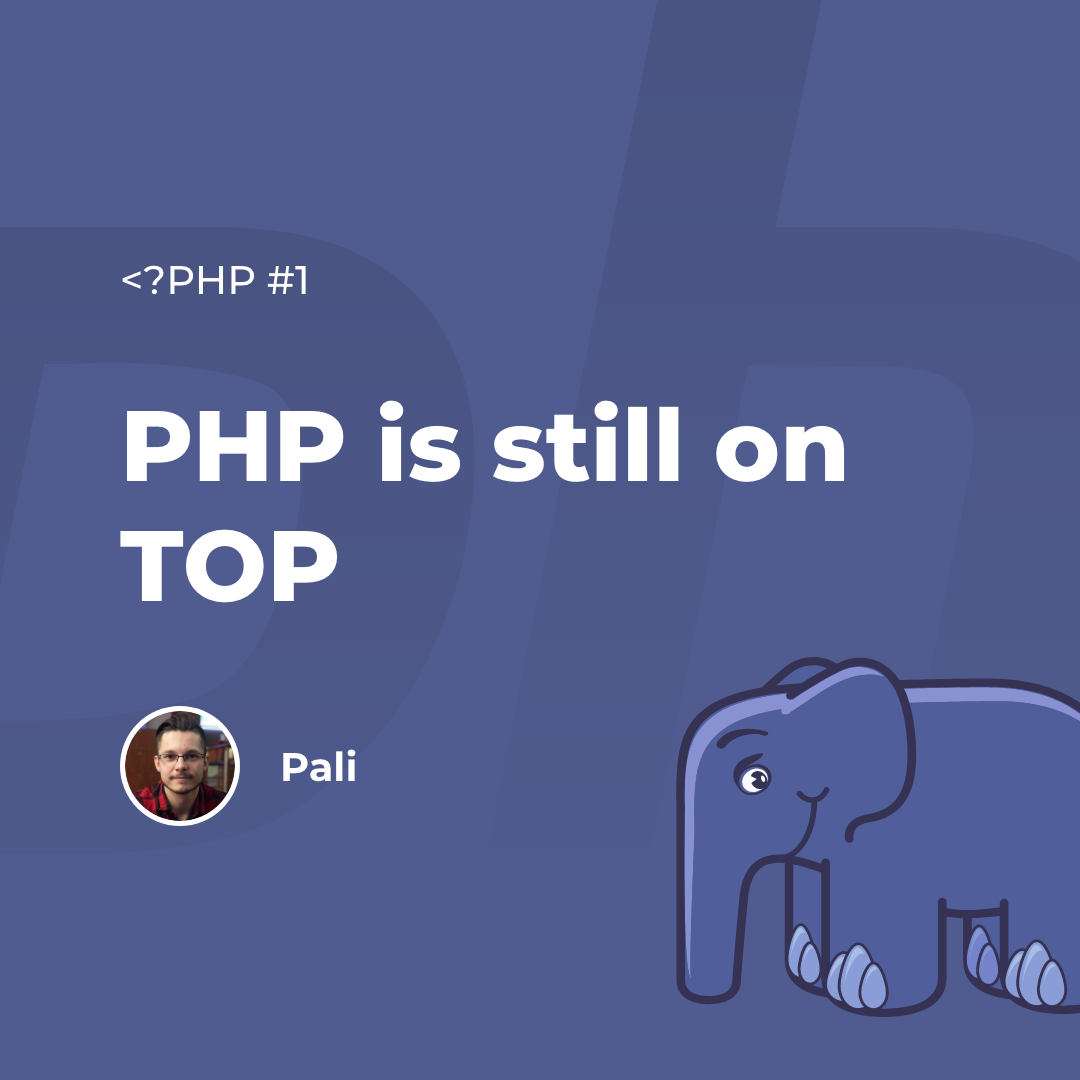According to W3Techs statistics, PHP is still the most widely used server-side programming language. In almost 30 years of its existence, it has climbed to version 8.1, and thanks to great documentation, it has gained the appreciation of millions of programmers who now form a community helping each other. It includes us – PHP is a daily part of our lives and we decided to pay tribute to it with a mini series of blogs about why and where we use it.

What is PHP?
PHP [1], or Hypertext Preprocessor in full, is a scripting language used primarily to create web applications. PHP is run exclusively on the server side, where various actions take place, such as computing and generating HTML code. In most cases, this code is then sent to the client, where it’s also rendered. Sometimes a server response can be sent in the form of an object representing the necessary data.
This scripting language was created in 1994 and its author is Rasmus Lerdorf, who designed it to resemble languages like C or Perl, because the developers of the systems/applications for whom the new language was intended, used these [2]. After all, it’s easier to learn things that are at least a little familiar to us (author’s note: applies to everything :D). The latest major version of PHP at the time of writing this post (July 2022) is PHP 8.1 [3].
Popularity and use
Despite its age and constantly evolving new technologies, PHP is still at the forefront of web application development today. This is also evidenced by the W3Techs statistics, according to which as of the current date (July 2022) the PHP language dominates the server-side ranking of programming languages with 77.6% [4].

If you’re a developer, you’ll surely also appreciate clear documentation with code samples to help you understand the given functionality faster. PHP itself is a simple (moderately demanding at most ?) and at the same time full-featured programming language that can do a lot – just look at the documentation?. But now we can only guess what future major versions of PHP will bring.
It will probably come as no surprise when that we also use PHP in bart.sk on several projects where we actively work and improve them.
Usage options
What are the possibilities of PHP, or what we use it for (of course, it changes from project to project, but these are the most common cases):
- Performing an action – for this, we can imagine, for example, displaying a product page where multiple activities are performed, such as loading inventory, prices, product images and the like. Another action may be processing a submitted order. Web applications allow different actions based on their focus – the result of these actions is HTML code or JSON, which represents data and information about the success of the request sent from the client. The advantage of using PHP in this case, for example, is its speed – it allows (compared to some technologies even three times) faster loading of websites [5].
- Performing tasks in the background – if we have 10,000 products on an e-shop, each of them with different variants, different stock levels, prices, etc., it’s difficult to update data manually, for example through an administration system. We therefore update such data in an automated manner, which is the most effective solution in terms of time and, ultimately, in financial terms as well. This also avoids problems such as typos in the names or poor stock settings. Here, too, of course, the speed of PHP is a great advantage.
- Implementation of external services – if it’s necessary for our system to enable processing of orders by delivery services or to enable full-text search, it’s necessary to connect it with another system. Such a connection can be implemented in different ways. In general, we can imagine a request sent from the client to the server and then from the server to an external service, where the information is further processed according to requirements and needs. Implementation is made easier thanks to PHP because this language is well compatible with other programming languages in which the external service may be coded [5].
We’ll cover more details about what PHP can do in the next blog.
Summary
And finally, a small summary from this post about the PHP programming language.
<?php
$language = ‘PHP’;
$type = ‘server-side’;
$version = ‘8.1’;
$popularity = ‘high’;
$difficulty = ‘low/medium’;
$fullFeatured = true;
$advantages = [‘community’, ‘documentation’];
$usageInWebDevelopment = 77.6;
$usageInBart = true;
?>







